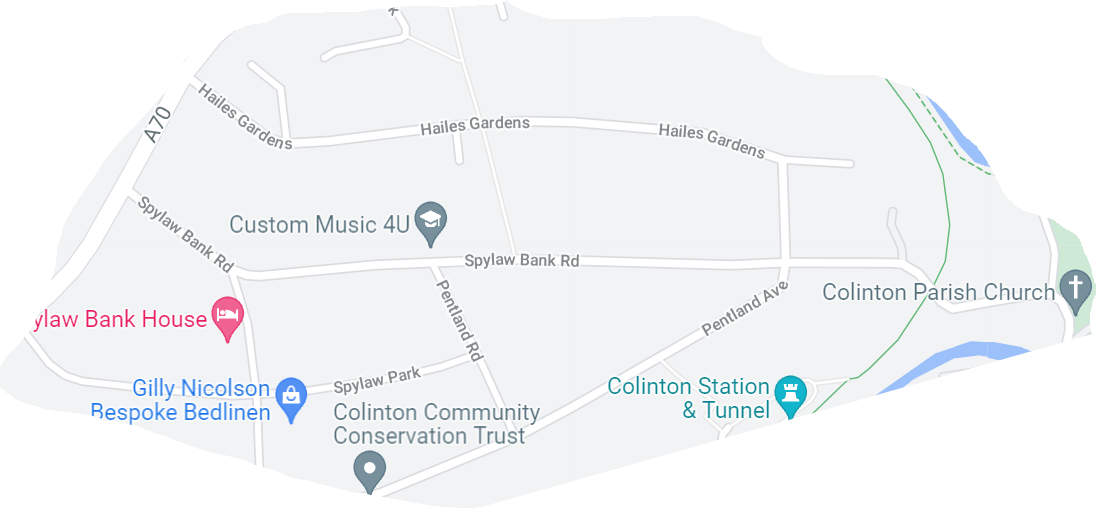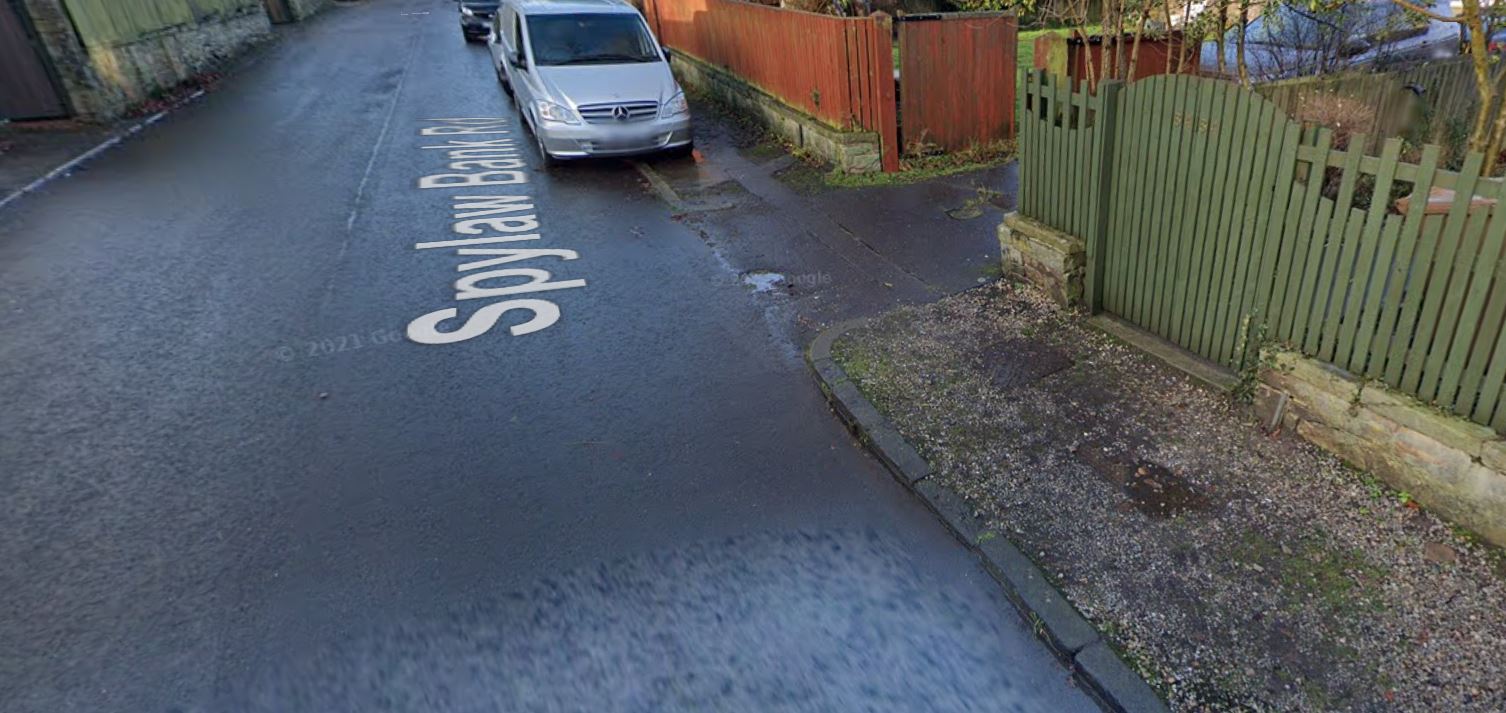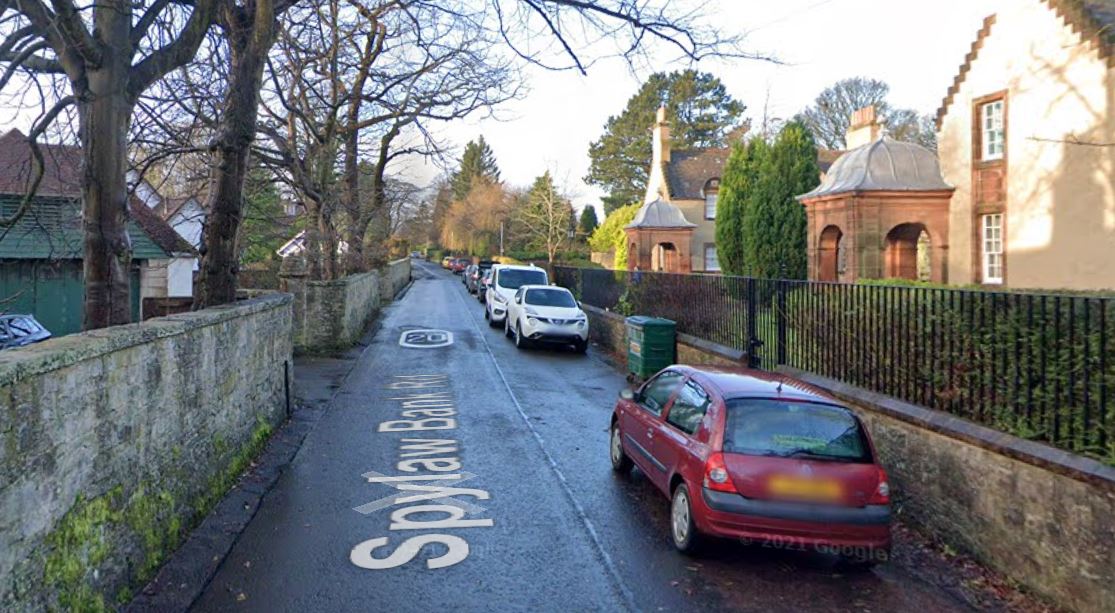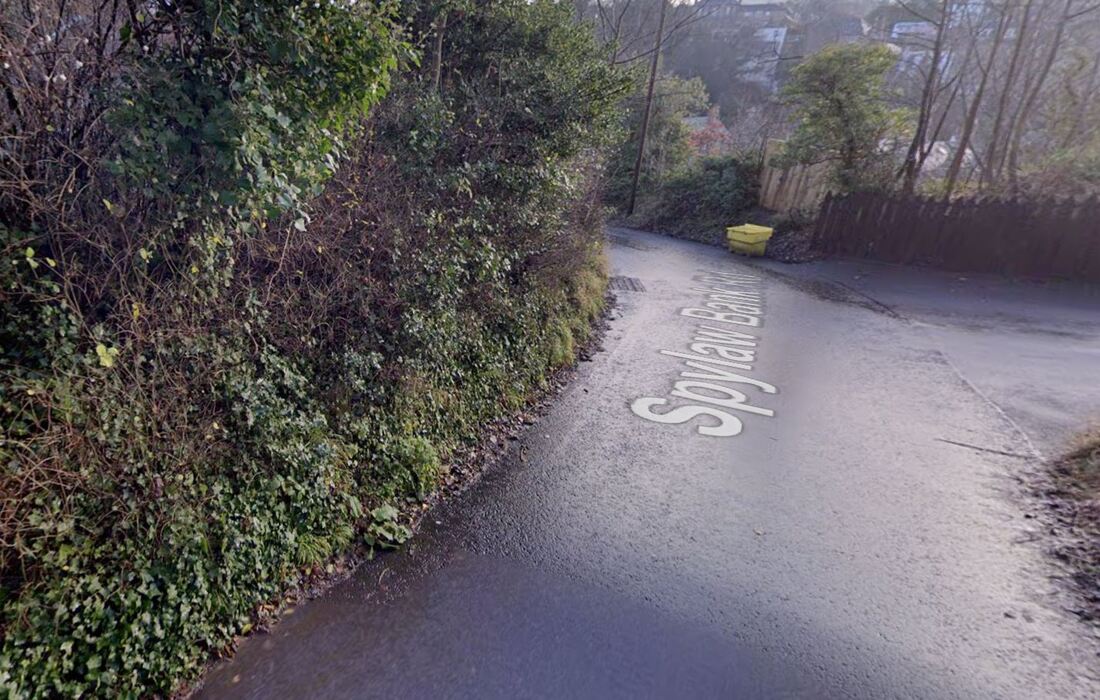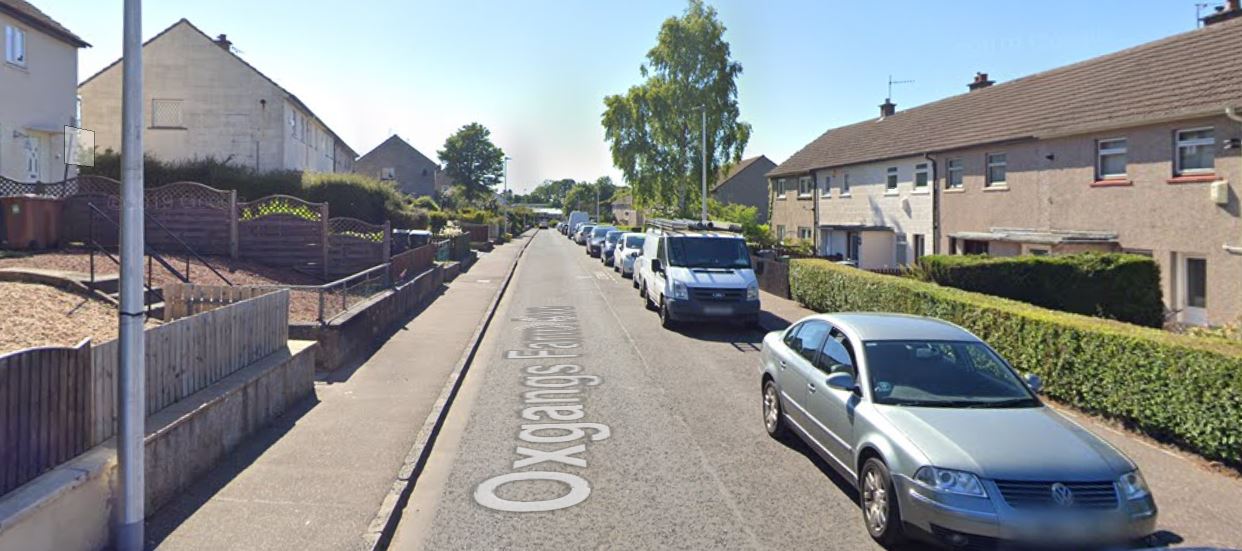|
There are many areas of Edinburgh where the urban design almost guarantees that car ownership will be the number one choice for people living there. I have been noticing this more and more as the planet grapples with the climate crisis. I think it is going to require an enormous change in design, planning and culture to reduce car dependency for such areas. I am going to take Spylaw Bank Road and the adjacent streets as an example of this situation. This opinion is based on my observations and thoughts when walking these streets. I am assuming that:
Here's a map of the area. And these are the reasons why I think it will be a challenge to get more people to use sustainable and active travel in this area. Poor state of pavements does not encourage walking Spylaw Bank Road has some pavements that are poorly maintained. They are gravel and not easy to walk on, particularly if you have a pram or wheelchair. Pavement parking can be common on these streets and that can force pedestrians to walk on the road. Just where the gravel pavement finishes, around number 48 Spylaw Bank Road, there is no pavement at all! You have to walk on the road here. And there are always parked cars on this part of the road, so you are forced to walk further out onto the road and constantly be aware of any approaching traffic. Luckily it is a quiet road, so the risk is low, but if we want people to walk places they shouldn't have to share the space with moving vehicles. The worst part of Splaw Bank Road for walking is the downhill section to Colinton Parish Church. There is no pavement, it is a narrow road and it has a blind corner. It feels unsafe to walk here because you are concerned about a vehicle suddenly approaching and not having enough time or space to get out the way. The design of these streets does not encourage people to walk. The disregard for the maintenance of some of the pavements feels like someone has thought there was no point because everyone who lives here uses a car. Limited access to safe cycling routes Streets like Spylaw Bank Road do make for good cycling because the low traffic volume makes them safe. Most people on a bike could feel quite comfortable exploring these streets, but what if you want to use a bike to go from this area to somewhere else? The area is surrounded by main roads that have much higher volumes of traffic and they don't have much in the way of cycling infrastructure. For example, Colinton Road has no cycling infrastructure. Lanark Road does have some protected cycle lanes, but not the full length of the road. You can get from here to the Water of Leith cycle path that leads to the Union Canal, but I've written previously about the inadequacies of the Union Canal as a cycle route for everyday journeys. You've also got to cycle that blind corner on Spylaw Bank Road to get to this route. It's also not realistic for many people to cycle back up that very steep hill to get home. Distance to everyday amenities If you want to get some basic groceries, like a pint of milk you could head to the Co-op on Bridge Road. Depending on where you live and how fast you can walk this can take no more than 15 minutes walking. However, it means you have the gravel pavements, no pavements and blind corners to contend with. You could go via the B701 to avoid walking this way, but this is a really unpleasant walk. Although there is a pavement you are walking alongside fast moving traffic. If you have children you probably wouldn't want to walk here. If you need a supermarket then walking to a supermarket from here is unlikely as it will take around 30 minutes versus 5 to 10 minutes by car. Cycling to these supermarkets is possible, but the lack of cycling infrastructure to these stores will put off many people even contemplating this. Inconvenient access to bus and rail services A long time ago there used to be more stations in this area. Now the closest station to Spylaw Bank Road and the surrounding streets is Kingsknowe. Depending on where you live in this area and your walking speed it could take you up to 18 minutes to get to this station. The train can get you to Edinburgh Waverley in about 13 minutes, but its an inconvenient hourly service. The 44 bus can get you to Princess Street in about 25 minutes. Depending on where you stay on Spylaw Bank Road or the surrounding streets it's probably a maximum of a 10 minute walk to get to the bus stop. That's a much more realistic prospect than relying on the train service, but if a resident of this area needs transport for an everyday journey like getting to the supermarket will the bus be their choice? If they own a car it means they can drive it straight into a parking space at the supermarket and not have to carry shopping bags for any great distance. The bus offers no such convenience. Home ownership goes hand in hand with car ownership On Spylaw Bank the average selling price of a house is around £1.2 million. The houses all appear to have driveways and space for cars. I assume that for most residents there is no financial barrier to car ownership. I don't think that people buy houses in areas like this and choose not to own a car. I might be wrong in these assumptions, but I walk this street and there are a lot of cars here. People who live in areas like this are perhaps more likely to be able to afford an electric vehicle. However, electric vehicles are not a sustainable solution. Homes are often marketed for their convenient location to major roads and a place to store a vehicle for free (driveway, garage or free on-street parking). In this area, the closeness of the city bypass is used as a selling point for homes. It is assumed that the potential buyer of these homes owns a car. How many people buy a home in areas like this based on convenient access to sustainable and active travel options? Civic leaders assuming electric vehicles are the answer At COP26 in Glasgow it was clear that electric vehicles are seen as the solution to reducing transport's contribution to the climate crisis. That's why I assume that areas like this in Edinburgh will not see any changes. I think that civic leaders believe that the residents will eventually switch to electric vehicles. The pavements will not be fixed, there will be no new cycling infrastructure, there will be no new shops and other amenities that can be more easily reached by walking. There will not be any schemes to encourage less car ownership. This is not the only part of Edinburgh like this Travel down any residential street in Edinburgh and there are parked cars. Even on streets that have good pavements it is clear that car is the number one choice for everyday journeys. Oxgangs Farm Avenue, is an example of a residential street with good pavements. I use this street frequently and rarely see people walking on these pavements and it is rammed with parked cars. There's a supermarket at 2 minute walk from this street, but I wonder how many people will still use a car for that trip? A colleague told me that they lived a 2 minute walk away from a supermarket, but often used their car because they would have too much shopping to carry. This blog illustrates the challenges of enabling active and sustainable travel in Edinburgh. If we want people to walk, cycle or take public transport for everyday journeys, like getting food shopping, there will need to be massive changes. Not only to infrastructure, but a total redesign of residential areas so that shops and services can easily be reached by short, safe, walking and cycling journeys. There also needs to be a massive shift away from a culture of car ownership and belief that electric vehicles are the answer to the climate crisis.
0 Comments
Leave a Reply. |
Categories
All
Archives
July 2024
|

